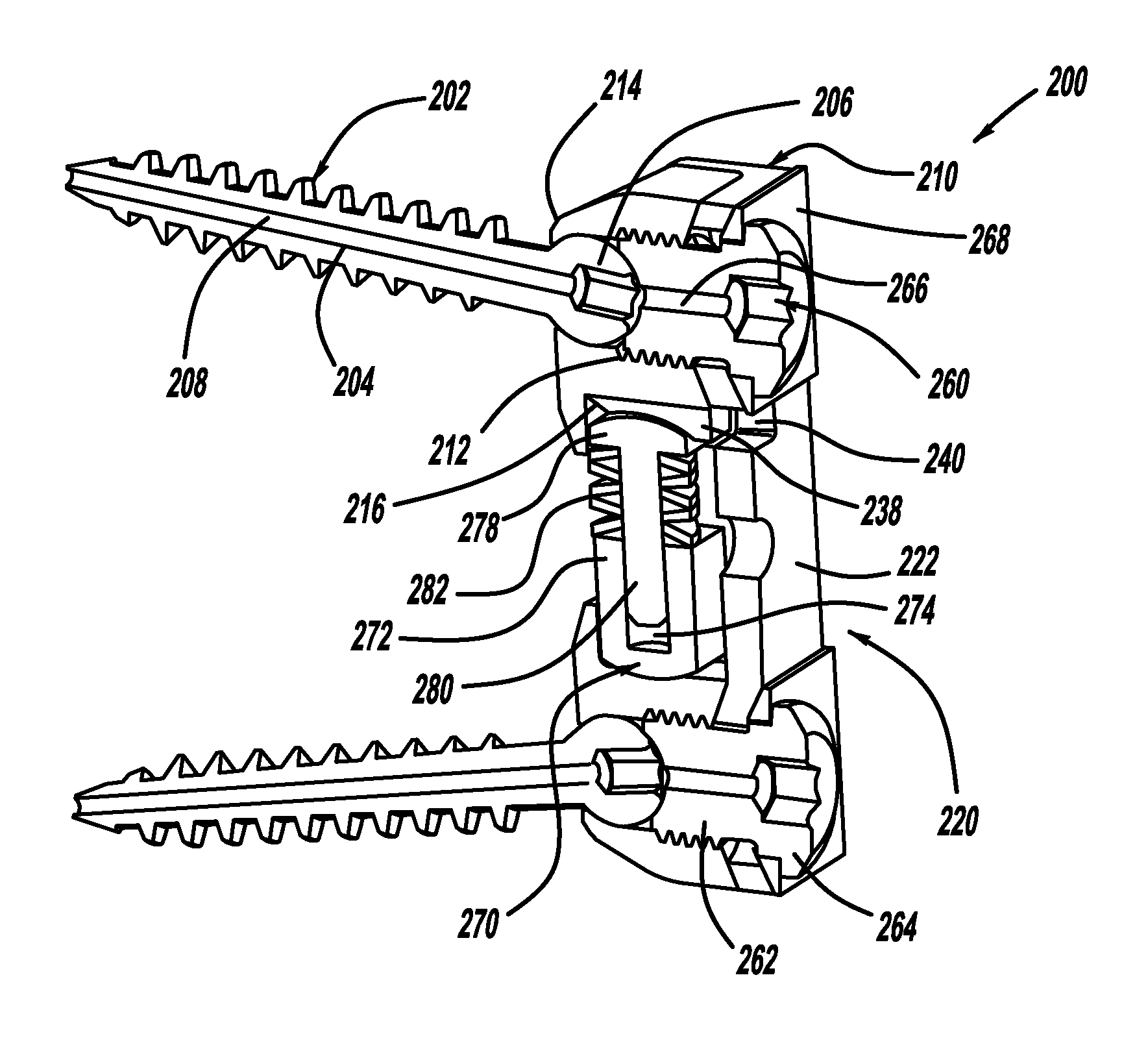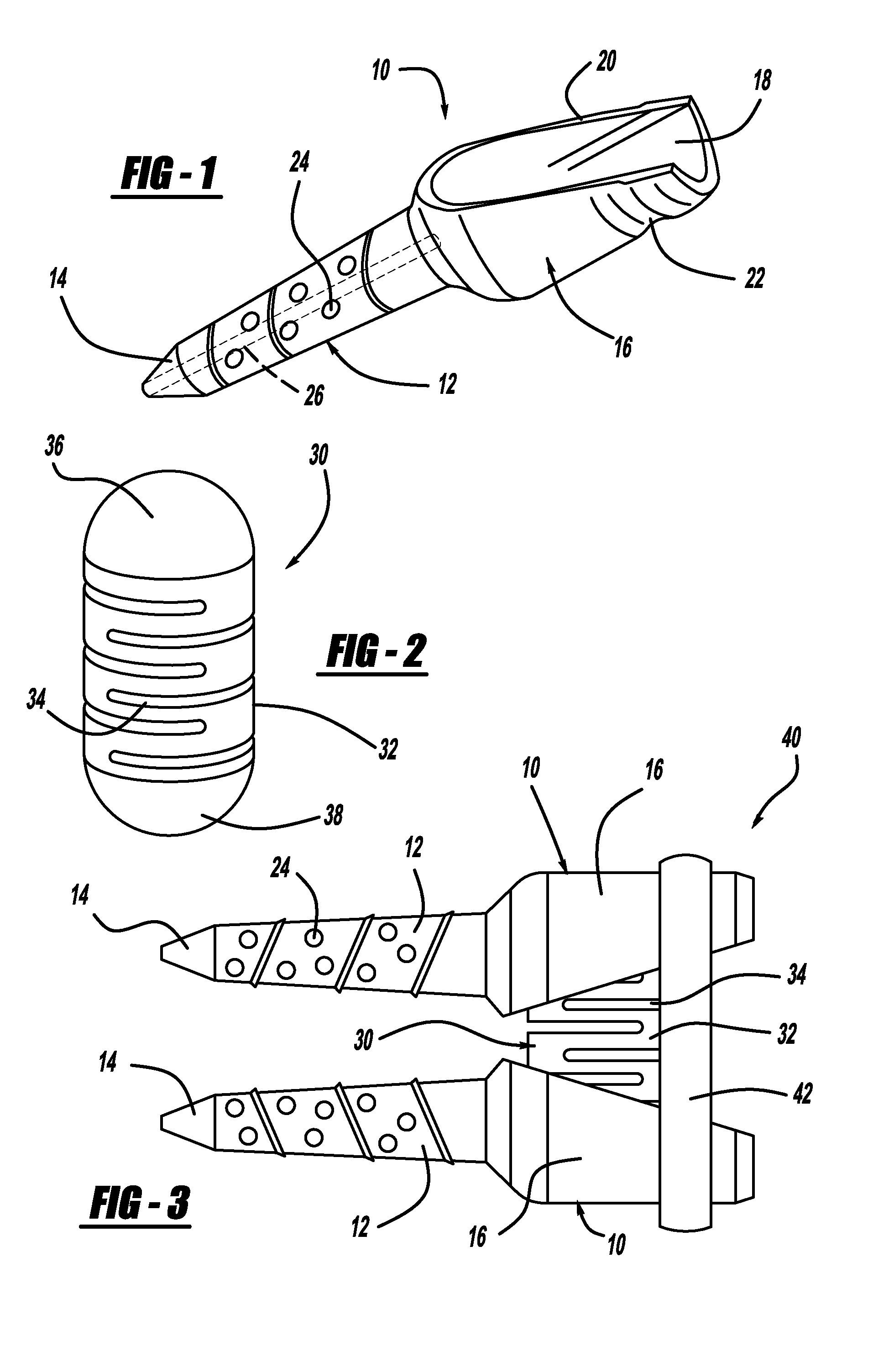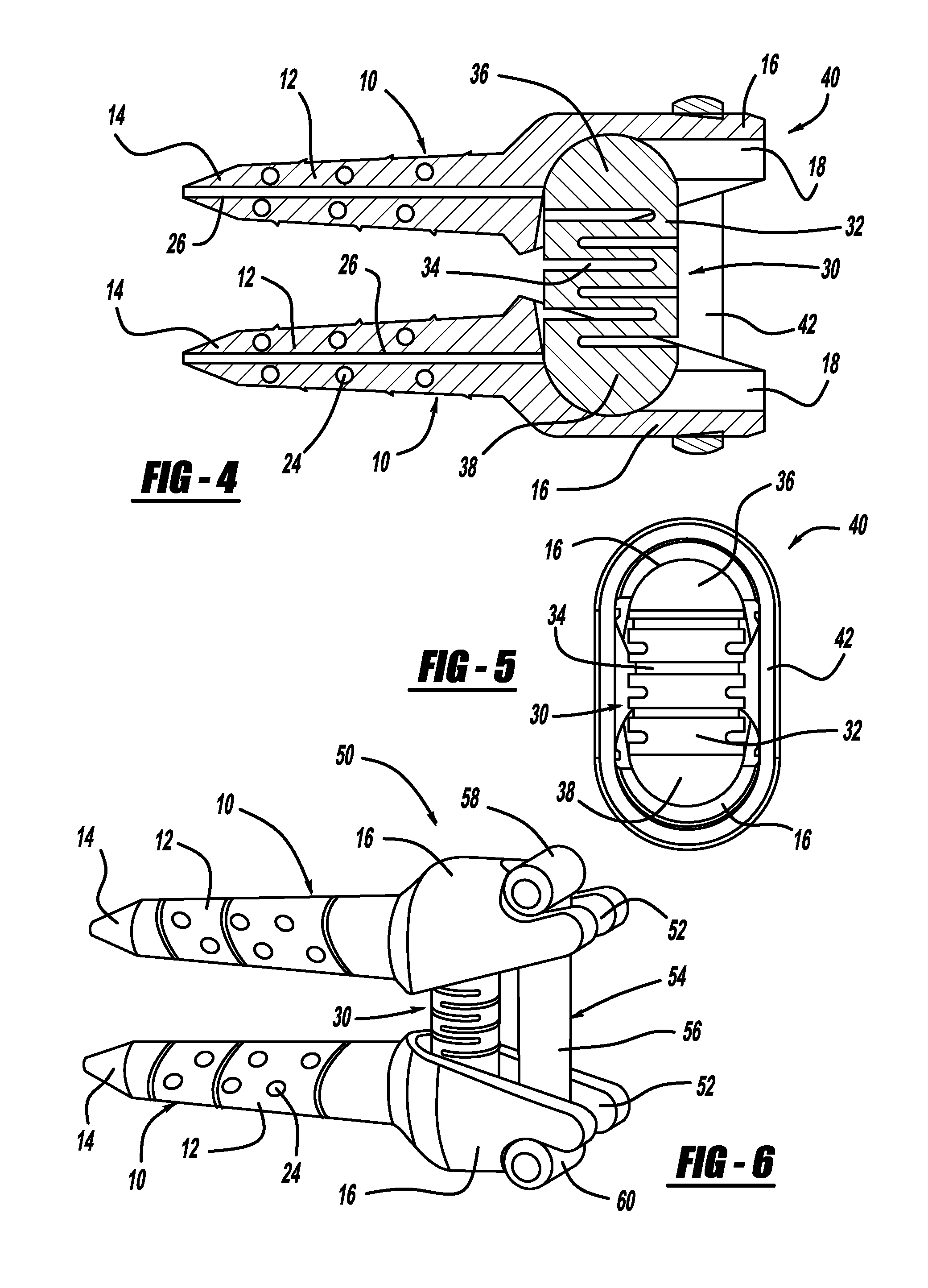Vertebral disc tensioning device
a technology of vertebral discs and tensioning devices, which is applied in the field of vertebral disc tensioning devices, can solve the problems of disc ultimately failing for cellular, slow disc degeneration in humans, and chronic back pain disorders and/or leg pain
- Summary
- Abstract
- Description
- Claims
- Application Information
AI Technical Summary
Benefits of technology
Problems solved by technology
Method used
Image
Examples
Embodiment Construction
[0039]The following discussion of the embodiments of the invention directed to a vertebral disc tensioning device is merely exemplary in nature, and is in no way intended to limit the invention or its applications or uses.
[0040]FIG. 1 is a perspective view of a pedicle screw 10 for use in a vertebral disc annular fibrosis tensioning and lengthening device (FIG. 3). The pedicle screw 10 includes a threaded and tapered body portion 12 having a tip 14. The body portion 12 includes a plurality of holes 24 that allow bone to grow therein when the screw 10 is threaded into the vertebral body so that the pedicle screw 10 is better anchored within the vertebra. The use of holes in the body portion of a pedicle screw to facilitate bone growth therein can be employed in other types of pedicle screws for other uses besides vertebral disc annular fibrosis tensioning and lengthening devices, such as spinal fusion pedicle screw and rod instrumentation, well known to those skilled in the art. The ...
PUM
 Login to View More
Login to View More Abstract
Description
Claims
Application Information
 Login to View More
Login to View More - R&D
- Intellectual Property
- Life Sciences
- Materials
- Tech Scout
- Unparalleled Data Quality
- Higher Quality Content
- 60% Fewer Hallucinations
Browse by: Latest US Patents, China's latest patents, Technical Efficacy Thesaurus, Application Domain, Technology Topic, Popular Technical Reports.
© 2025 PatSnap. All rights reserved.Legal|Privacy policy|Modern Slavery Act Transparency Statement|Sitemap|About US| Contact US: help@patsnap.com



